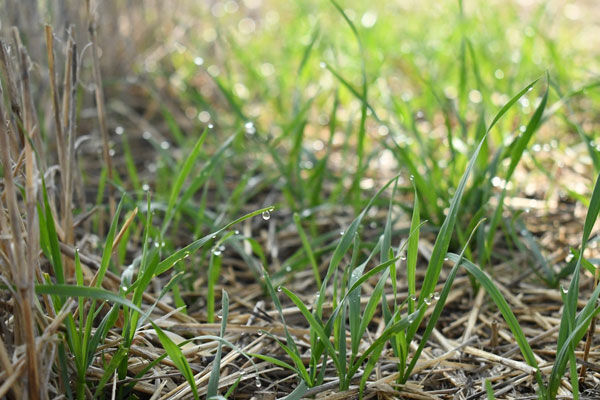The rain delays and weather concerns that plagued this year’s growing season and dogged down harvest progress indicate favorable conditions for volunteer wheat establishment. As a result, Kansas producers cannot let down their guard on controlling volunteer wheat as they prepare for the next growing season, lest they leave open the door for wheat streak mosaic virus and other diseases to survive the winter.
“One of the best preventative measures for wheat streak is the control of volunteer wheat early and often after harvest,” reported K-State in an Agronomy eUpdate on July 22. “If volunteer wheat is allowed to stand, it creates a ‘green bridge,’ allowing wheat streak mosaic and wheat curl mites to survive locally. Volunteer wheat should be terminated at least two weeks before planting to allow sufficient time for mites to die off.”
With specific conditions varying across the state, the 2020-2021 growing season included drought-stressed wheat in southwest Kansas, waterlogged conditions in central Kansas, hail damage, freeze damage during late boot and early heading and excessive rainfall that delayed harvest. Each of those situations might have increased the amount of seed left behind after harvest, which will likely lead to more volunteer wheat.
Among other issues, volunteer wheat provides the green tissue that wheat curl mites—which carry WSMV and other viruses—need as a suitable host. When volunteer wheat emerges shortly after harvest, wheat curl mites can build up rapidly and spread to other volunteer wheat stands that emerge later in the season. In contrast, if early emerging volunteer wheat is controlled shortly after harvest, that will help break the green bridge. Glyphosate and atrazine are common herbicide applications for controlling volunteer wheat in addition to tilling.
However, if more volunteer emerges during the summer, follow-up control will still be needed. Producers should apply a second application of herbicide or till to make sure all volunteer wheat is dead within one-half mile of fields being planted to wheat in the fall. Producers should complete the second round of application or tillage at least two weeks before planting to ensure enough time for the entire population of wheat curl mites to die off.
In addition to controlling volunteer wheat in the field, producers also can select varieties with built-in genetic resistance to WSMV and other severe disease problems. Varieties adapted to Kansas with WSMV resistance include KS Dallas (red), KS Hamilton (red), Guardian (red), Oakley CL (red), Joe (white) and Clara CL (white). Another set of varieties has resistance to the wheat curl mite, including TAM 112, Byrd, Avery, Langin, KS Western Star, Whistler, Canvas, Guardian, Crescent AX, Incline AX, Fortify SF, TAM 115, TAM 204 and T158.
This genetic resistance in these varieties is helpful, but is most effective when used in combination with strategies to control volunteer wheat. By doing so this summer and early fall, producers can help stop the spread of WSMV and other viruses and reduce a substantial limiting factor to next year’s harvest.
Learn more from K-State Agronomy at https://eupdate.agronomy.ksu.edu/article_new/wheat-streak-mosaic-virus-it-is-critical-to-stay-on-top-of-volunteer-wheat-this-year-453-1.


